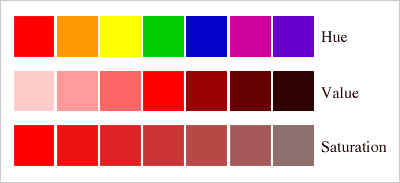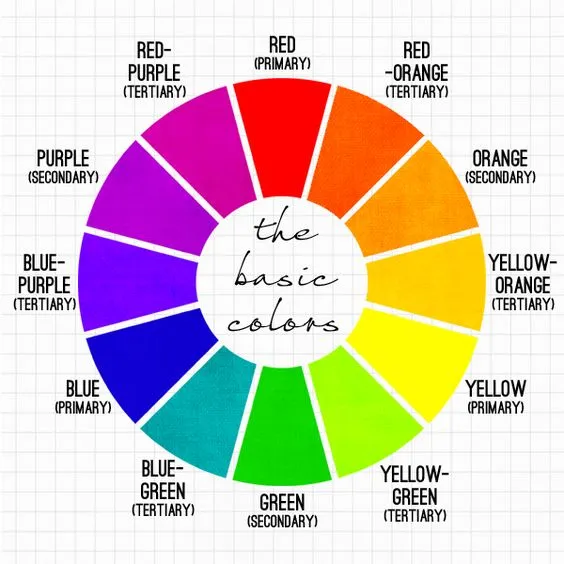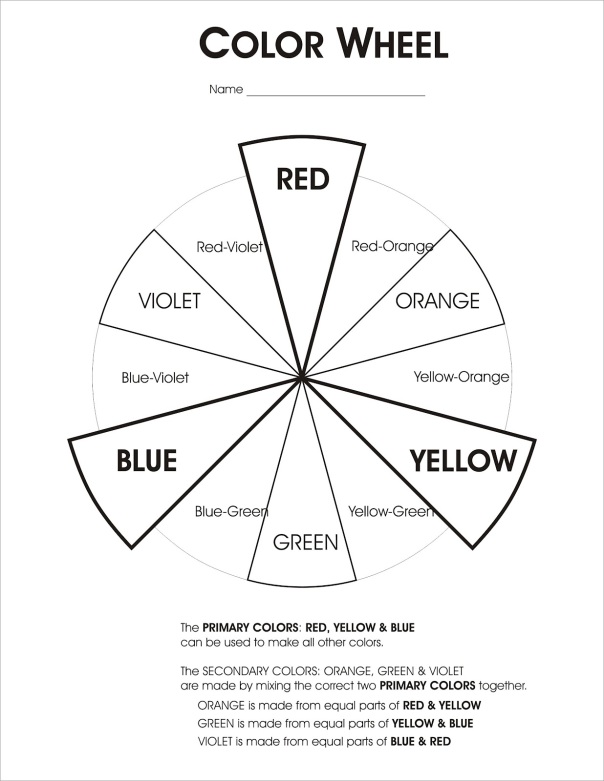The first thing you need to know is that color is made up of three parts: hue, value, and saturation. Hue is the purest form of a color, what color looks like in its most basic form. Value deals with how light or dark a hue is. Saturation deals with how vivid or dull a hue is. Here’s an example of the different parts at work:


All three parts work together to create a color, but of the three, the one part that absolutely has to be present is hue. A color can’t be a color without a hue, because hue is the biggest visual indicator of, and the starting point for, color.
That’s why color wheels use bright, fully saturated, undiluted hues. If you’re not familiar with the color wheel, this is what one looks like:


Most artist color wheels will have 12 basic hues on it – 3 primary colors, 3 secondary colors, and 6 tertiary colors. You already know half of them by name, if not category – the primary colors of red, blue, and yellow, and the secondary colors of orange, green, and purple.

The primary colors are called “primary” because they can’t be made or mixed; they exist as is, and different combinations of them create all of the other colors in the traditional artist’s color model. For example, combining two primary colors together creates a secondary color. Combining one primary and one secondary color creates a tertiary color.
Makes sense, right? And you could keep combining them, but most color wheels will stick to the primary, secondary, and tertiary colors to keep things simple. These 12 colors are also the simplest forms of individual colors; further mixing would only create various hues of these 12. Think of them as the larger categories that all other colors will fall into.

Since the primary and secondary colors are pretty familiar, let’s talk about the tertiary colors real quick. You may know them by fancier, jazzier names like “aqua” or “lime green”, but to keep things straight, color theory refers to them by the two colors that make them up, with the primary color going first. They are red-orange, yellow-orange, yellow-green, blue-green, blue-purple, and red-purple.
As far as arrangement goes, all the colors sit around a circle (hence the “wheel” part), with the secondary and tertiary colors sitting between the two colors that made them on the color wheel. So, green will always sit in between blue and yellow, and blue-green will always rest in between blue and green, no matter the shape of the wheel or which color is on top (I prefer red, but it varies).
This is done to show how colors are made, which is the first purpose of a color wheel. Here’s what they all look like together again, this time with labels:


